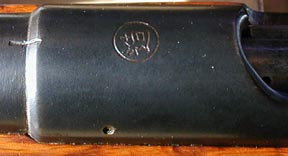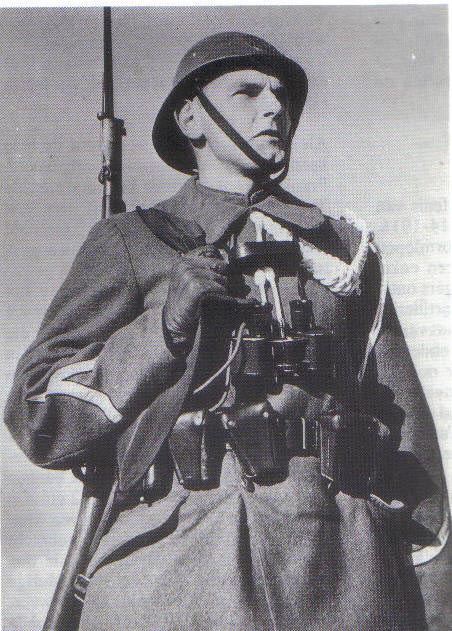No 4 O.M.
All military cyclists (Infantry and cavalry as well), since 1909, prod.
18,000.
No 4 N.M. All military
cyclists, although these were few! prod. Not more than 600, since 1918.
No 5. War production,
made from rifles.
Destination Motorized
artillery and Antiaircraft guns. prod. 36,000.
Rifles
of the Colonial Army
The Dutch Royal Army
and the Colonial Army differed in their needs and in 1896 an order was
placed for 36,000 Colonial rifles to suit their requirements. The rifles
were delivered in 1897 and then problems started because they were so heavy
and cumbersome. The Cavalry model carbine was first to be introduced
and other models were adopted between 1898 and 1945. In all there
were 5 carbine models used by the Colonial Army.
Karabijn M95 cavalerie-
there were about 10,000 produced. No hand guard was used. This
gun had a brass unit tag where the blonde insert is.
Karabijn M95 Marechaussee
- Military special forces- The Marechausse first adopted the cavalry
carbine but then modified it for infantry use, Production about 28,000.
No hand guard.
Karabijn M95 artillerie-
adopted in 1904, production about 3500
Karabijn m95 genie-
Engineer- adopted in 1917, production about 1000
Dutch rifles and carbines
were converted in Indo China to 7.7 or 303 British during the 50's and
are in many forms some with flash suppressors. We think that some
were converted in Japan also, as the mark below, on one, is Japanese Kanji.
Translated it means Weapons Arsenal.
Carbines
of the Royal Navy
The Navy was first
issued rifles but in the thirties they decided to modify them into carbines.
Adopted in 1939, the carbine had a protected front sight much like the
K98az, production was about 2500.
Reference books for
the M95
Mannlicher Rifles
and Pistols by Smith
The Dutch Mannlicher
M95 and the 6.5x53.5R Cartridge by the N.V.B.M.B. of The Netherlands.
Written in Dutch and English
Corporal of Police
troops
carrying the M95 with
two piece sling
original photo is
in the
Institute for
Military History in the Hague
Copyright
Carbines
for Collectors





